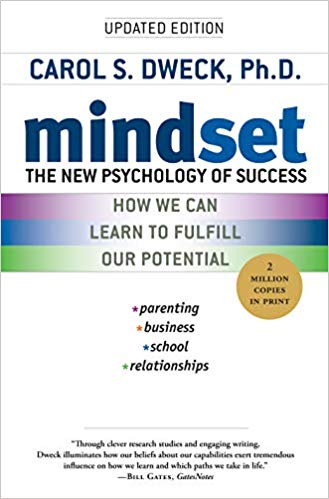

This article is an excerpt from the Shortform summary of "Mindset" by Carol Dweck. Shortform has the world's best summaries of books you should be reading.
Like this article? Sign up for a free trial here .
What are some examples of bad leadership qualities? What are the worst of the characteristics of a bad leader? Are poor leadership qualities avoidable?
We’ll cover why some of the biggest names in business, who thought they couldn’t fail, faltered due to bad leadership qualities. We’ll also look at why negative leadership traits are often associated with Carol Dweck’s concept of a fixed mindset.
Steve Case and Jerry Levin of AOL Time Warner
What happens when two superstar CEOs with fixed mindsets combine their companies? Steve Case of AOL and Jerry Levin of Time Warner both felt superior, liked to intimidate, took others’ credit, refused to hear complaints, and fired critics. When they merged their companies, AOL was near ruin, but instead of working together to salvage it, they competed for power. Levin failed first and Case refused to work with the new CEO because he didn’t want to share power and credit — he’d rather let the company fail. When he finally was forced to resign, he denied responsibility for any problems. By the end of 2002, AOL Time Warner had lost nearly $100 billion in market value, the largest annual loss in U.S. history. This is what happens when two people with bad leadership qualities go head to head.
Bad Leadership Qualities
Iacocca, Dunlap, Lay/Skilling and Case/Levin put their personal interest in looking good above corporate interests at key points. Paradoxically, as their companies barrelled toward disaster, they felt invincible and entitled. As their companies faced real threats, they lived in an alternate reality. This is one of the most common bad leadership qualities.
For instance, while getting millions in compensation, Lay took huge personal loans from the company and used corporate jets as his personal family air service. Iacocca threw Christmas parties for the company elite, at which he presented himself with an expensive gift at company expense. In their worlds, they felt validated while their companies burned. Facing and addressing the problems would have entailed risks of failure they were unwilling to take.
Fixed-minded bosses also have a penchant for abusing employees, another major poor leadership quality. In his book, Brutal Bosses, Harvey Hornstein says that abusing others shores up a boss’s feelings of superiority, competence, and power. Skilling denigrated others, while those who worked with Levin compared him to Caligula. A former CEO of Sunbeam-Oster, Paul Kazarian, threw things at his executives. Fixed-mindset CEOs excuse this behavior by claiming to be perfectionists or wanting to keep people on their toes. Pleasing the boss becomes the employees’ priority. This is one of the many detrimental effects of bad leadership qualities.
Lee Iacocca of Chrysler: Poor Leadership Qualities
Lee Iacocca was tapped to turn Chrysler around in the 1980s. He’d been fired by Henry Ford II, which left him angry and determined to prove himself through saving Chrysler. In his first few years, he made good hires, introduced new car models, and sought bailout loans. In his autobiography, he bragged that he was a hero.
However, Chrysler soon got into trouble again, while Iacocca focused on polishing his image. He spent money on things that would boost Chrysler’s stock to impress Wall Street instead of investing in new car designs and manufacturing efficiencies. He got rid of ambitious, intelligent people he felt threatened by, a huge mistake resulting from bad leadership qualities.
Rather than responding to Japan’s innovative new cars with better ones, he made excuses and demanded the U.S. retaliate with tariffs. He spent lavishly on a corporate suite while morale in the company plummeted. The board finally grew fed up and got rid of him.
The mindset of a company’s leader is a key determinant of whether a company fails or succeeds. This is why the negative characteristics of a bad leader are so detrimental.
One of the most spectacular business failures in recent years was the collapse of the energy giant Enron in 2006. At the heart of Enron’s failure was a fixed mindset, an obsession with talent that blinded the company’s leadership to serious problems, and blinded investors and outsiders to the fact that the business was a house of cards destined to fall.
Business gurus of the time were insisting that corporate success required hiring with a “talent mindset.” It was touted as the key to beating the competition. Enron’s culture was built on this thinking. The company recruited big talent and paid handsomely for it. But because the company celebrated talent, employees felt they had to always appear highly talented in order to survive. Basically, everyone was forced into a fixed mindset, intent on proving their superiority. Although looking for talent seems like a good thing to do, it’s actually a trait of a bad leader, a negative leadership trait.
Since people with fixed mindsets can’t admit flaws, the company couldn’t acknowledge and correct its mistakes, which spelled its doom. Even after its failure, CEO Jeff Skilling never admitted there was anything wrong, instead blaming others for not getting it. This is the ultimate bad leadership quality.
———End of Preview———

Like what you just read? Read the rest of the world's best summary of "Mindset" at Shortform . Learn the book's critical concepts in 20 minutes or less .
Here's what you'll find in our full Mindset summary :
- The difference between a growth and a fixed mindset
- How a fixed mindset keeps you back throughout your life: education, relationships, and career
- The 7 key ways to build a growth mindset for yourself






